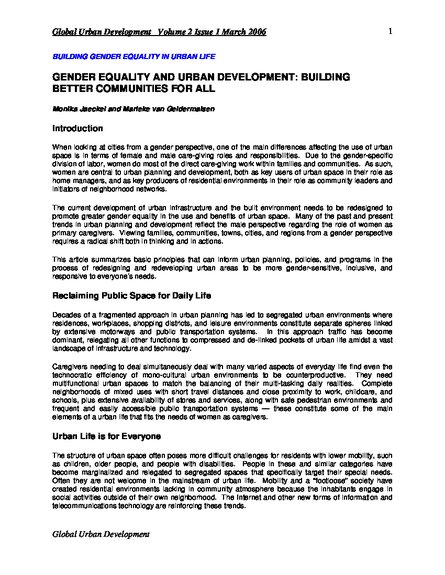
When looking at cities from a gender perspective, one of the main differences affecting the use of urban space is in terms of female and male care-giving roles and responsibilities. Due to the gender-specific division of labor, women do most of the direct care-giving work within families and communities. As such, women are central to urban planning and development, both as key users of urban space in their role as home managers, and as key producers of residential environments in their role as community leaders and initiators of neighborhood networks. The current development of urban infrastructure and the built environment needs to be redesigned to promote greater gender equality in the use and benefits of urban space. Many of the past and present trends in urban planning and development reflect the male perspective regarding the role of women as primary caregivers. Viewing families, communities, towns, cities, and regions from a gender perspective requires a radical shift both in thinking and in actions. This article summarizes basic principles that can inform urban planning, policies, and programs in the process of redesigning and redeveloping urban areas to be more gender-sensitive, inclusive, and responsive to everyone’s needs.
Resource collections
- Accountability to affected populations (AAP)
- Topics
- UN Habitat - Urban Response Collection
- Urban Response - Urban Crisis Preparedness and Risk Reduction
- Urban Response Collection - Community Engagement and Social Cohesion
- Urban Response Collection - Economic Recovery
- Urban Response Collection - Environment and Climate Change
- Urban Response Collection - Housing, Land and Property
- Urban Response Collection - Urban Crisis Response, Recovery and Reconstruction
- Urban Response Collection - Urban Resilience
